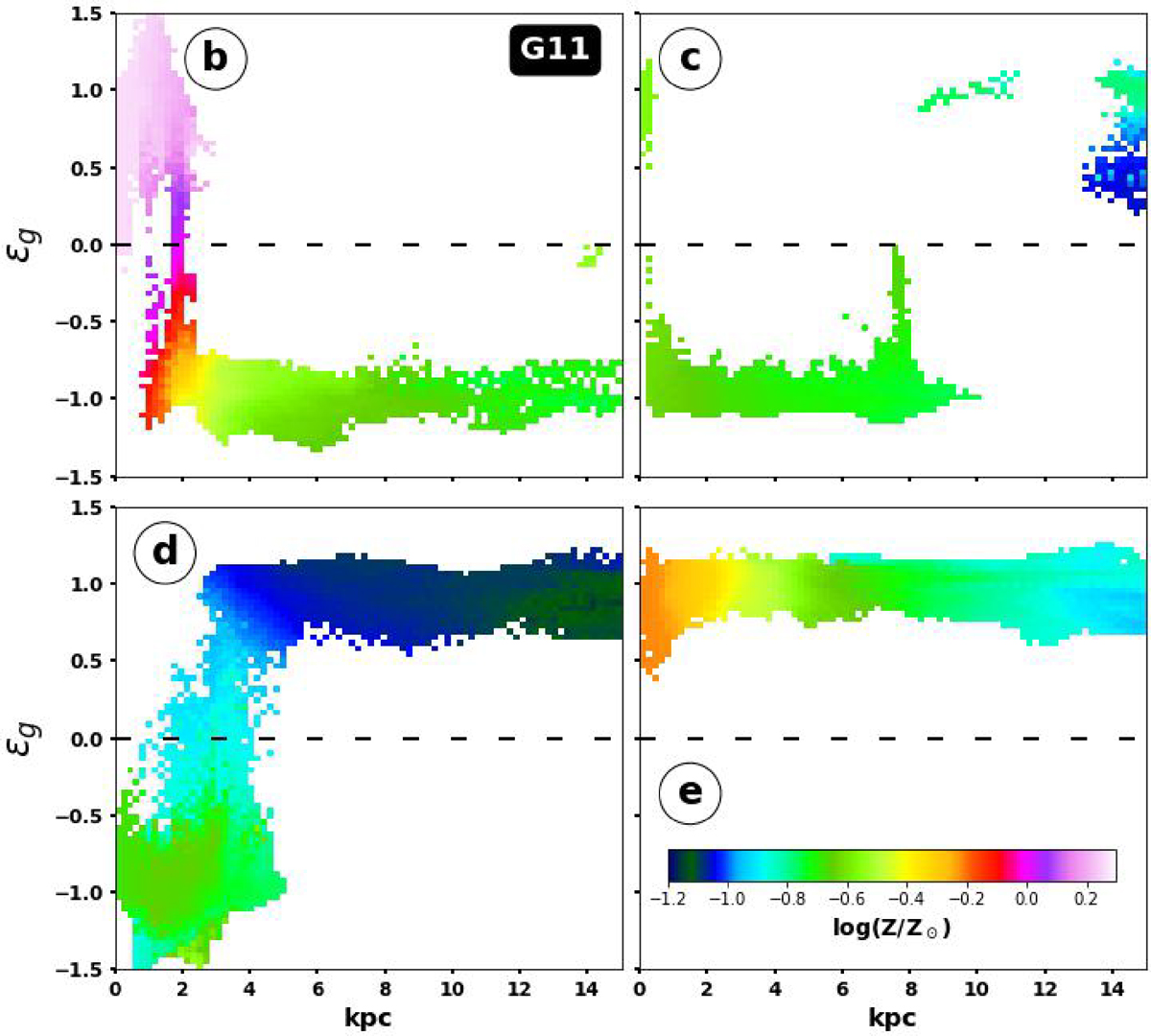Fig. 6.

Download original image
Gas circularity parameter-radial distance-stellar metallicity diagrams at four different times. At epoch &#Xtextcircled;b, the pre-existing disk (ϵ* > 0) has a high metallicity (log(Z/Z⊙) > 0) compared to the accreted gas (log(Z/Z⊙) ∼ –0.7). We note that at r ∼ 1 kpc, there is some gas mixing at the interface of the two disks. At epoch &#Xtextcircled;c, the accreted gas has totally replaced the pre-existing one. Due to the lack of star formation and therefore to a subsequent low supernovae activity, the new disk tend to keep its original metallicity. In epoch &#Xtextcircled;d, the same phenomenon repeats: coexistence of two disks. The accreted gas is characterized here by a very low metalliciy (log(Z/Z⊙) < − 1). Then in epoch &#Xtextcircled;e, the new disk has totally replaced the older one, but due to a star formation activity slightly more pronounced during the gas accretion, the new gas disk has a metallicity that gradually increases from smaller to larger radii.
Current usage metrics show cumulative count of Article Views (full-text article views including HTML views, PDF and ePub downloads, according to the available data) and Abstracts Views on Vision4Press platform.
Data correspond to usage on the plateform after 2015. The current usage metrics is available 48-96 hours after online publication and is updated daily on week days.
Initial download of the metrics may take a while.


